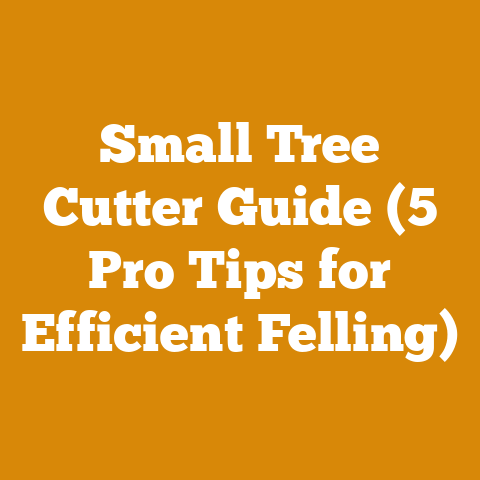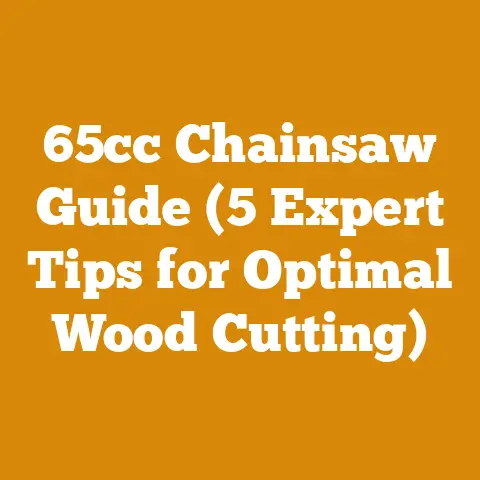Stump Out Stump and Vine Killer: Effective Methods to Stop Regrowth (Expert Arborist Tips)
As the days shorten and a crispness fills the air, my thoughts turn to the satisfying crackle of a winter fire. But before that warmth, there’s the less romantic task of dealing with the remnants of summer’s growth – stubborn tree stumps and relentless vines. Over the years, I’ve battled my fair share of these woody adversaries, and I’ve learned a thing or two about making them disappear for good. This guide is my compilation of those hard-won lessons, focusing on effective methods to stop regrowth using stump and vine killers. Let’s get started!
Stump Out: Effective Methods to Stop Regrowth (Expert Arborist Tips)
Understanding the Enemy: Why Stumps and Vines Regrow
Before reaching for the chemicals, it’s crucial to understand why these botanical zombies keep coming back. Stumps, connected to extensive root systems, store carbohydrates that fuel new shoots. Vines, especially invasive species, are masters of vegetative reproduction, sending out runners and rhizomes that sprout new plants with alarming speed.
- Stumps: A seemingly dead stump can harbor a surprising amount of energy. The roots continue to draw moisture and nutrients from the soil, allowing the stump to send up new shoots, often far from the original trunk.
- Vines: Vines like poison ivy, kudzu, and wisteria are particularly tenacious. Even small fragments of root or stem left in the soil can regenerate into a new plant. They spread horizontally, forming dense mats that are difficult to eradicate.
My experience in forest management has shown me that a superficial approach to stump and vine removal is a recipe for frustration. You need a strategy that targets the entire plant, including the root system.
Identifying the Right Stump and Vine Killer
Choosing the right product is the first step in winning the battle. Stump and vine killers typically fall into two categories:
- Systemic herbicides: These are absorbed by the plant and translocated throughout the root system, killing the entire organism. Examples include glyphosate and triclopyr.
- Contact herbicides: These kill only the parts of the plant they directly contact. While they can be effective for small vines or new shoots, they are less effective for stumps with extensive root systems.
Important Considerations:
- Target species: Some herbicides are more effective on certain species than others. Read the product label carefully to ensure it’s suitable for the specific stump or vine you’re dealing with.
- Environmental impact: Consider the potential impact on non-target plants and the surrounding ecosystem. Glyphosate, while widely used, has been the subject of debate regarding its safety. Triclopyr is generally considered less harmful to the environment but can still affect broadleaf plants.
- Soil type: Soil type can influence herbicide effectiveness. Clay soils, for example, can bind to certain herbicides, reducing their availability to the plant.
- Safety: Always wear appropriate personal protective equipment (PPE), including gloves, eye protection, and long sleeves, when handling herbicides. Follow the product label instructions carefully.
I once made the mistake of using a contact herbicide on a large maple stump. While it killed the initial shoots, the stump continued to send up new growth for years. A systemic herbicide is almost always the better choice for stumps.
Method 1: The “Cut Stump” Treatment
This method involves cutting the stump as close to the ground as possible and then immediately applying herbicide to the freshly cut surface.
Step-by-Step Guide:
- Prepare the stump: Using a chainsaw, cut the stump as close to the ground as safely possible. Ensure the cut surface is clean and free of debris.
- Choose your herbicide: Select a systemic herbicide like glyphosate or triclopyr. I prefer triclopyr for hardwood stumps, as it tends to be more effective.
- Apply the herbicide: Within minutes of cutting the stump, apply the herbicide to the entire cut surface. Pay particular attention to the outer edges of the stump, as this is where the cambium layer (the living tissue responsible for growth) is located. Use a paintbrush, spray bottle, or a specialized stump treatment applicator.
- Monitor for regrowth: Check the stump periodically for new shoots. If regrowth occurs, reapply the herbicide.
Tool List:
- Chainsaw (with appropriate safety gear)
- Herbicide (glyphosate or triclopyr)
- Paintbrush or spray bottle
- Gloves
- Eye protection
Key Considerations:
- Timing is crucial: The herbicide must be applied immediately after cutting the stump, before the cambium layer begins to seal itself off.
- Complete coverage: Ensure the entire cut surface is thoroughly saturated with herbicide.
- Weather conditions: Avoid applying herbicide on windy days or when rain is expected, as this can reduce its effectiveness.
My Personal Tip: I often add a dye to the herbicide solution to help me see where I’ve already applied it. This prevents me from missing any spots and ensures complete coverage.
Method 2: The “Frill Cut” Treatment
This method is useful for larger stumps or trees that are difficult to cut down completely. It involves making a series of downward-angled cuts around the circumference of the stump and then applying herbicide into the cuts.
Step-by-Step Guide:
- Prepare the stump: Using a hatchet or axe, make a series of downward-angled cuts (frills) around the circumference of the stump, as close to the ground as possible. The cuts should penetrate through the bark and into the cambium layer.
- Choose your herbicide: Select a systemic herbicide like glyphosate or triclopyr.
- Apply the herbicide: Immediately after making the cuts, apply the herbicide into each frill. Use a squirt bottle or a small paintbrush to ensure the herbicide reaches the cambium layer.
- Monitor for regrowth: Check the stump periodically for new shoots. If regrowth occurs, reapply the herbicide.
Tool List:
- Hatchet or axe
- Herbicide (glyphosate or triclopyr)
- Squirt bottle or paintbrush
- Gloves
- Eye protection
Key Considerations:
- Cut depth: The cuts must penetrate through the bark and into the cambium layer for the herbicide to be effective.
- Cut spacing: The cuts should be spaced closely enough together (typically 2-3 inches apart) to ensure complete coverage of the cambium layer.
- Herbicide concentration: You may need to use a higher concentration of herbicide for the frill cut treatment compared to the cut stump treatment.
My Personal Experience: I used the frill cut method on a massive oak stump in my backyard. It took a few applications of herbicide, but eventually, the stump succumbed, and I was able to reclaim that space for my garden.
Method 3: The “Foliar Spray” Treatment for Vines
This method is used to control vines by spraying the foliage with a systemic herbicide. It’s most effective when the vines are actively growing.
Step-by-Step Guide:
- Identify the target vines: Make sure you can accurately identify the vines you want to control. Avoid spraying desirable plants.
- Choose your herbicide: Select a systemic herbicide like glyphosate or triclopyr. Glyphosate is generally effective on a wide range of vines, but triclopyr may be more effective on woody vines.
- Prepare the herbicide solution: Mix the herbicide according to the product label instructions.
- Apply the herbicide: Using a backpack sprayer or a handheld sprayer, thoroughly spray the foliage of the target vines. Avoid spraying on windy days or when rain is expected.
- Monitor for results: Check the vines periodically for signs of herbicide damage. It may take several weeks for the vines to die completely. You may need to reapply the herbicide to control new growth.
Tool List:
- Backpack sprayer or handheld sprayer
- Herbicide (glyphosate or triclopyr)
- Gloves
- Eye protection
Key Considerations:
- Timing: The foliar spray treatment is most effective when the vines are actively growing, typically in the spring or summer.
- Coverage: Ensure the foliage is thoroughly wetted with the herbicide solution.
- Drift: Be careful to avoid spraying non-target plants. Use a drift-reducing nozzle on your sprayer and avoid spraying on windy days.
- Repeat applications: You may need to repeat the foliar spray treatment several times to completely control the vines.
Real-World Example: I once helped a neighbor eradicate a massive patch of poison ivy using the foliar spray method. It took several applications of glyphosate over the course of a summer, but eventually, we were able to eliminate the poison ivy completely.
Method 4: The “Basal Bark” Treatment for Vines
This method is used to control woody vines by applying herbicide directly to the bark of the vine. It’s most effective on vines with relatively thin bark.
Step-by-Step Guide:
- Identify the target vines: Make sure you can accurately identify the vines you want to control.
- Choose your herbicide: Select a herbicide specifically labeled for basal bark treatment. These herbicides typically contain triclopyr ester.
- Prepare the herbicide solution: Mix the herbicide according to the product label instructions.
- Apply the herbicide: Using a backpack sprayer or a handheld sprayer, thoroughly spray the lower 12-18 inches of the vine’s trunk with the herbicide solution. The bark should be completely wetted.
- Monitor for results: Check the vines periodically for signs of herbicide damage. It may take several weeks or months for the vines to die completely.
Tool List:
- Backpack sprayer or handheld sprayer
- Herbicide (triclopyr ester)
- Gloves
- Eye protection
Key Considerations:
- Bark thickness: The basal bark treatment is most effective on vines with relatively thin bark. It may not be effective on vines with thick, mature bark.
- Herbicide concentration: Use the herbicide concentration recommended on the product label for basal bark treatment.
- Complete coverage: Ensure the lower 12-18 inches of the vine’s trunk is completely wetted with the herbicide solution.
- Weather conditions: Avoid applying herbicide on windy days or when rain is expected.
Case Study: I used the basal bark treatment to control a wisteria vine that was growing up a mature oak tree. The foliar spray method was not an option because of the risk of damaging the oak tree. The basal bark treatment was effective in killing the wisteria vine without harming the oak tree.
Dealing with Invasive Species: A Special Note
Invasive species like kudzu, Japanese honeysuckle, and oriental bittersweet are particularly challenging to control. They are aggressive growers and can quickly outcompete native plants.
Tips for Controlling Invasive Species:
- Persistence is key: It may take several years of repeated treatments to completely eradicate invasive species.
- Combine methods: Consider using a combination of methods, such as cutting the vines and then treating the stumps with herbicide, or using the foliar spray method followed by the basal bark treatment.
- Monitor the area: After treatment, monitor the area regularly for new growth. Remove any new shoots or seedlings promptly.
- Consider professional help: If you are dealing with a large infestation of invasive species, consider hiring a professional arborist or landscaping company.
I’ve seen firsthand the devastating impact of invasive species on native ecosystems. It’s crucial to take a proactive approach to control these plants and protect our natural resources.
Alternative Methods: Non-Chemical Options
While herbicides can be effective, some people prefer to avoid using them. Here are some non-chemical options for controlling stumps and vines:
- Manual removal: This involves digging up the stump or vine roots by hand. It’s labor-intensive but can be effective for small stumps or vines.
- Stump grinding: This involves using a machine to grind the stump down to below ground level. It’s a relatively quick and easy way to remove a stump, but it doesn’t kill the root system.
- Solarization: This involves covering the stump or vine with a sheet of clear plastic to trap heat and kill the plant. It’s a slow process but can be effective for small stumps or vines.
- Salt: Pouring salt on a stump can kill it, but it can also harm the surrounding soil. I generally avoid this method.
My Perspective: While I sometimes employ non-chemical methods, I’ve found that herbicides are often the most effective and efficient way to control stubborn stumps and vines. However, it’s important to use herbicides responsibly and to consider the potential environmental impact.
Safety First: Protecting Yourself and the Environment
When using herbicides, it’s essential to prioritize safety.
Safety Precautions:
- Read the label: Always read and follow the product label instructions carefully.
- Wear PPE: Wear appropriate personal protective equipment (PPE), including gloves, eye protection, and long sleeves.
- Avoid contact with skin and eyes: If herbicide comes into contact with your skin or eyes, wash immediately with plenty of water.
- Store herbicides safely: Store herbicides in a secure location out of reach of children and pets.
- Dispose of herbicides properly: Dispose of empty herbicide containers according to the product label instructions.
- Protect water sources: Avoid applying herbicides near water sources, such as wells, streams, and ponds.
Environmental Considerations:
- Use herbicides sparingly: Use herbicides only when necessary and in the minimum amount required to achieve the desired results.
- Avoid spraying on windy days: Avoid spraying herbicides on windy days to prevent drift.
- Protect non-target plants: Be careful to avoid spraying non-target plants.
- Consider using biodegradable herbicides: Consider using herbicides that are biodegradable and less harmful to the environment.
I always take extra precautions when handling herbicides, and I encourage everyone to do the same. Our health and the health of our environment depend on it.
Troubleshooting: Common Problems and Solutions
Even with the best planning, you may encounter problems when trying to control stumps and vines. Here are some common problems and solutions:
- Problem: The herbicide doesn’t seem to be working.
- Solution: Make sure you are using the correct herbicide for the target species. Check the herbicide concentration and application rate. Ensure the herbicide is being applied properly.
- Problem: The stump is sending up new shoots.
- Solution: Reapply the herbicide to the new shoots. You may need to repeat the application several times.
- Problem: The vines are regrowing from the roots.
- Solution: Dig up the roots and treat them with herbicide. You may need to repeat this process several times.
- Problem: The herbicide is damaging non-target plants.
- Solution: Be more careful when applying the herbicide. Use a drift-reducing nozzle on your sprayer. Avoid spraying on windy days.
My Advice: Don’t get discouraged if you encounter problems. Stump and vine control can be challenging, but with persistence and the right approach, you can achieve your goals.
Long-Term Maintenance: Preventing Regrowth
Once you’ve successfully controlled the stumps and vines, it’s important to take steps to prevent regrowth.
Preventative Measures:
- Monitor the area regularly: Check the area regularly for new shoots or seedlings.
- Remove new growth promptly: Remove any new growth as soon as you see it.
- Maintain healthy vegetation: Healthy vegetation can help to suppress weed growth.
- Use mulch: Mulch can help to prevent weed seeds from germinating.
My Closing Thoughts: Controlling stumps and vines can be a challenging but rewarding task. By understanding the biology of these plants, choosing the right methods, and prioritizing safety, you can reclaim your yard and create a beautiful and healthy landscape. Remember, patience and persistence are key. Good luck!





